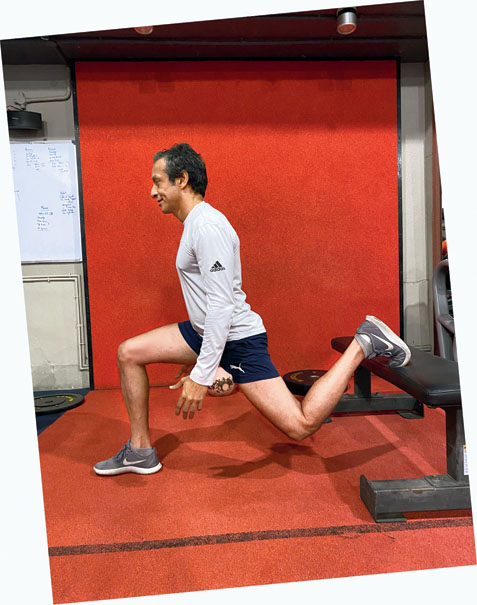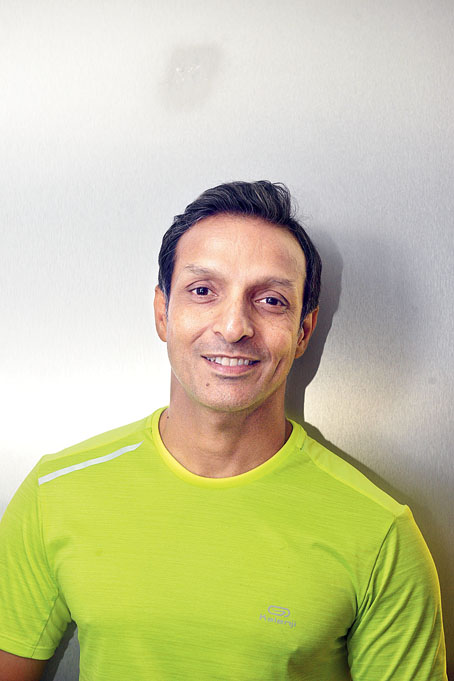When we speak about longevity, we usually refer to the health of one’s heart, active lifestyle, nutritious diet and a few other metabolic factors, like glucose tolerance and blood pressure. There are, however, other equally important parameters that can affect your lifespan and longevity that may not get the attention they deserve. I want to specifically discuss falls and accidents.
It may surprise or even shock you to know that according to the World Health Organisation global report on ‘falls prevention’ 28-35 per cent of people above the age of 65 fall each year and this proportion increases as age and frailty level increases. Wait for it: In India, prevalence of falls above the age of 60 is reported to range between 14-53 per cent. These statistics should shake up people of all ages from their complacency.
Falls in older adults can cause hip fractures and traumatic brain injuries. Injuries that can significantly impact a person’s health and quality of life. In fact, approximately 50,000 adult Indians die each year due to falls.
Best ways to add years to your life
My mother fell down and fractured her hip a few years back. The lack of mobility caused by this fracture led to a host of metabolic issues, so much so that she did not survive beyond three years of her hip surgery. I remember Dr Pooviah, a leading Calcutta specialist on geriatric medicine, saying this standing next to my mother’s bedside during her hip rehabilitation phase: “Mobility, mobility, mobility. Mobility is key to keeping your mom’s metabolic health up.”
Injuries often caused by falls, such as hip fractures, usually lead towards reducing the years and other health issues. Mortality rate a year after getting hip fracture is between 14 to 58 per cent, and the odds worsen with the age of the person suffering the injury.
If you want to live longer and enjoy a fuller life, it is imperative that you incorporate stability and proprioceptive training exercises in your fitness routine. And if you are saying “What fitness routine?”, then you better shake yourself up from this complacent hibernation.
According to Spandan Dutta, a Calcutta-based internationally-certified functional movement screen analyst, unilateral lower body exercises are the best way to improve balance, stability and proprioception, as it builds a direct response synapse with the CNS in the brain and stays in our muscle memory for long, even several years, after developing and mastering the movements. Adding these types of movements to your routine can help stave off falls in the future and add years to your life.
Never heard of this type of workout before? I give below everything that you need to know about unilateral lower body exercises, including four of the best exercises to incorporate into your routine. Don’t be intimidated by the exercises. Each one can be regressed to make it compatible to your skill and expertise or strength levels. In case you find it difficult to perform at first, there is a bailout... an easy version that you can practise for a while before stepping on the gas pedal. With some work, you can stay steady on your feet well into your 80s.
Importance of unilateral lower body movements
Basically, unilateral lower body exercises work on one side of your lower body and require tons of balance and coordination. They strengthen the leg muscles in a functional pattern and keep you steady on your feet. A study done in the University of Copenhagen found that in both young and old, during two weeks of inactivity, leg muscle strength weakened by a third, which is equivalent to 20-30 years of ageing. You may wish to compare these statistics to the period of inactivity many had to go through during the recent lockdown. Perhaps, based on the above stats, it may not be too sweeping to conclude that we may have aged that many years muscularly in the last 1.5 years.
According to Tom Holland, an exercise physiologist and author of The Micro-Workout Plan: “Unilateral leg training can dramatically improve your ability to perform the activities of daily life.” Working one side at a time can help you to identify and fix muscular imbalances and weaknesses in the lower body with the help of more targeted training.
Here are a few unilateral lower body exercises for you to try. For each move, aim to complete 10 to 15 reps on each leg for two-three sets. For optimal results, do them twice a week if possible, in the beginning, to build familiarity and repetitiveness.
Box step ups
This is the simplest of all one-leg exercises. All you have to do is vary the height of the box to increase or decrease the difficulty of the exercise. Assume a stance position with one foot on the box and the other a couple of feet back, pointing straight down the line. Load your front foot and drive the training leg up till the femur (thigh bone) forms a right angle with the tibia (shin bone). The spine should remain neutral — ensure that it does not collapse into a flexion. Pause briefly at the top before dropping the raised leg back into the stance position. The front foot remains planted on the box. This is one rep. Change your leg after completing all repetitions on this side.
Unilateral Swiss ball squats
This is a great move for improving stability and preventing falls. “It works the entire leg as well as core muscles,” says Holland. It’s especially good for your glutes. “Many people have weak glute muscles as a result of time spent sitting, which can result in a variety of musculoskeletal issues. Unilateral ball squats can help strengthen this all-important muscle,” he adds.
To do it, stand up and place a stability ball between your back and the wall. You should be leaning slightly against the ball. Bend your left leg, and keeping your weight on your right leg, slowly lower your body into a squat position. Your back should stay in contact with the ball as it rolls down the wall. Hold, then move back up into a standing position. Repeat 10 to 15 times, and then switch to the other leg.
Terminal extensions with Monster band
This exercise has helped me immensely in my knee rehabilitation. The VMO muscle lying in the medial (inside) of your thighs needs to fire in order to enhance knee stability. Most of the instability in our lower extremities arise out of an unstable knee joint. A strong VMO helps to stabilise the knee during walking, running, jumping and helps to minimise falls and slips.
Wrap a monster band around one knee and bend it in a squatting pattern to as deep as you can manage, The trailing leg remains bent to about a 90 degree. Pause briefly at the bottom, then lift yourself up to the starting position. This is one rep. Complete the recommended number of reps before moving on to the other leg.
Bulgarian split squats
With the trailing foot comfortably placed on a bench or chair, step your front foot out about two-three feet (with plenty of room to manoeuvre). Keeping most of your weight on the front foot and your trailing knee bent, lower your body down. The descent ends when you are unable to lower your back knee anymore without compromising form. Raise yourself up back to the stance. This is one rep. You may carry dumbbells to make the exercise more challenging. In order to regress or simplify it, you may start with a lower bench or maybe a small stool to place your feet. You could also use a balancing stick for support for the first few times.
Lower body movements

1 Step ups

2 Split squats

3 Terminal extensions with monster band

4 Swiss ball squats
Pictures courtesy: The author

Ranadeep Moitra is a strength and conditioning specialist and corrective exercise coach










